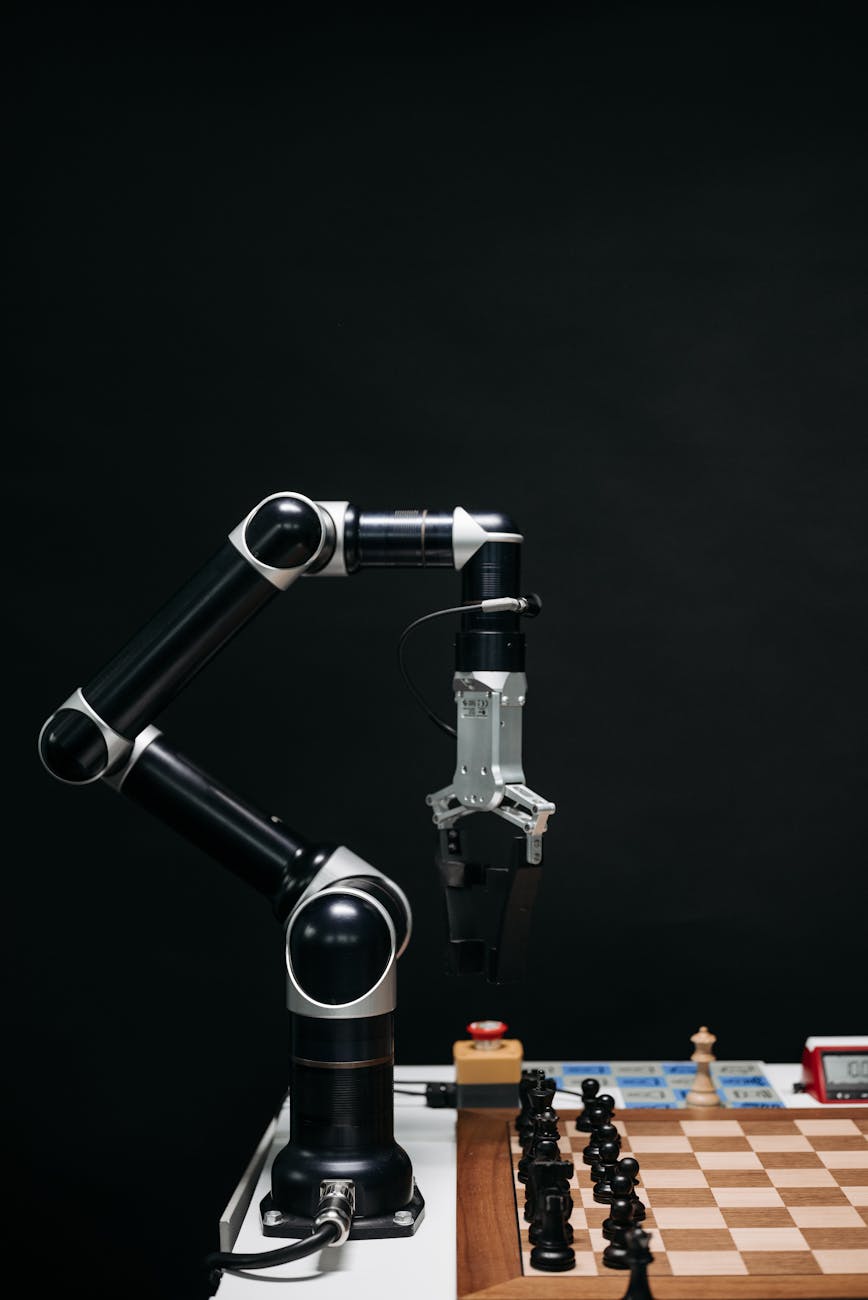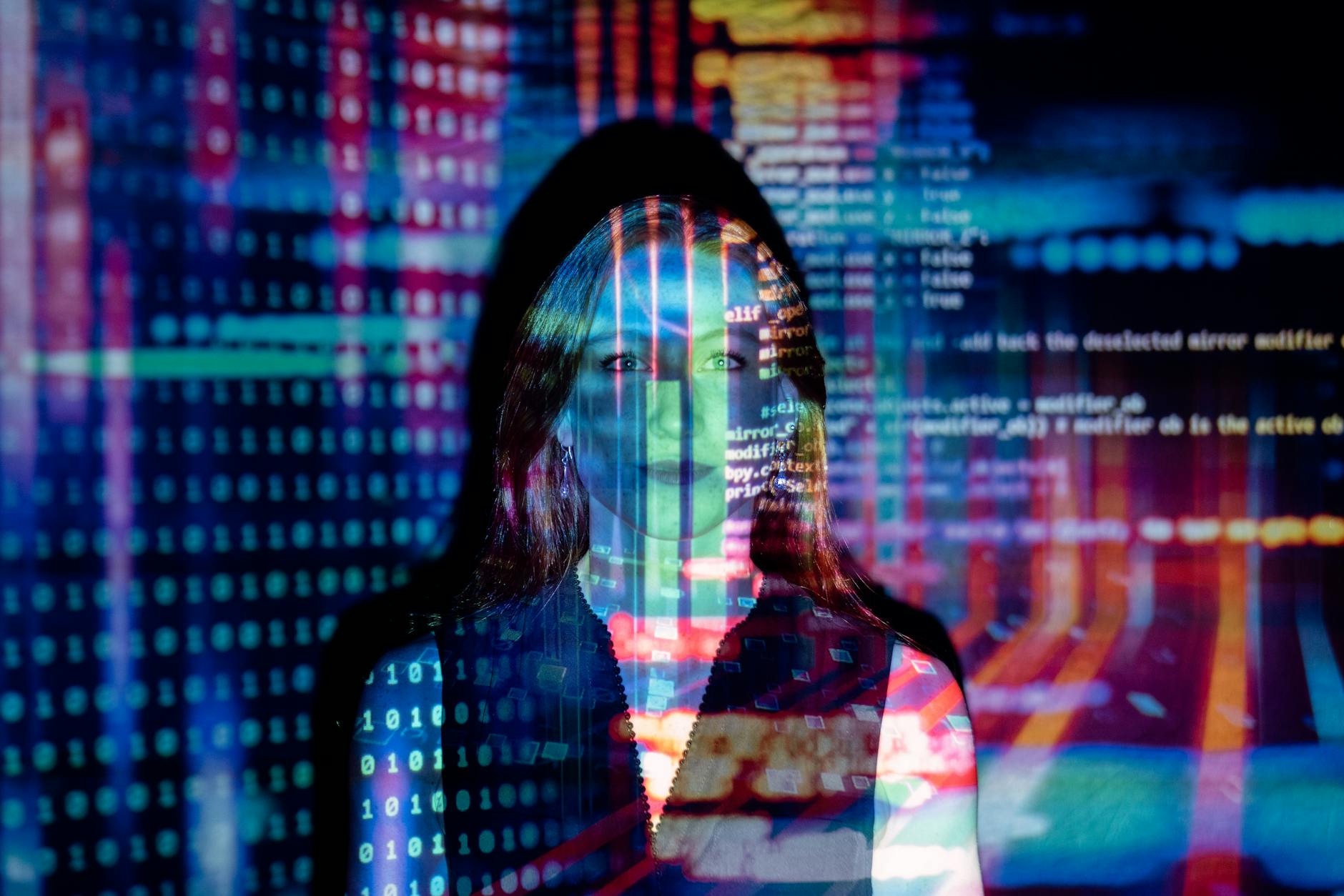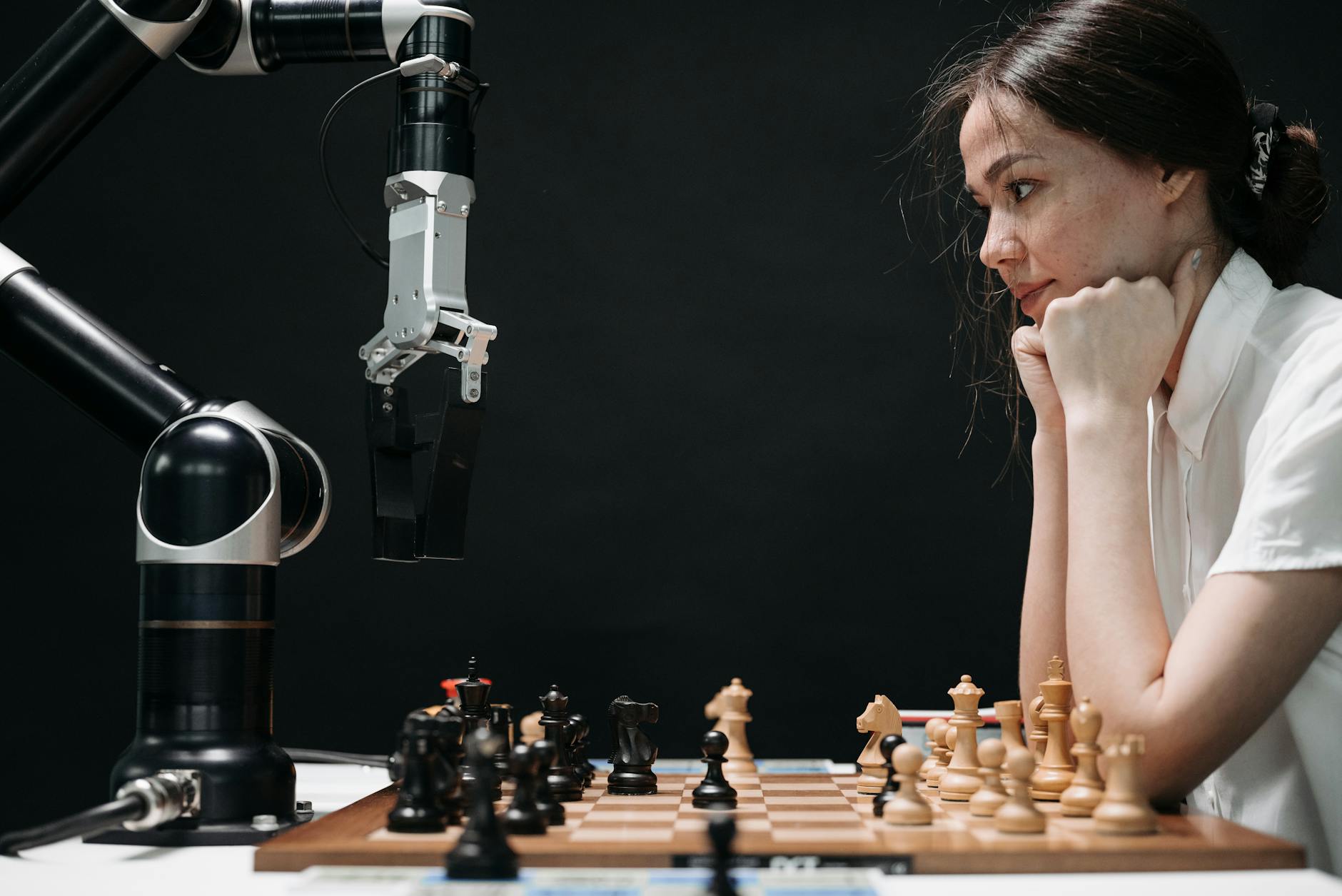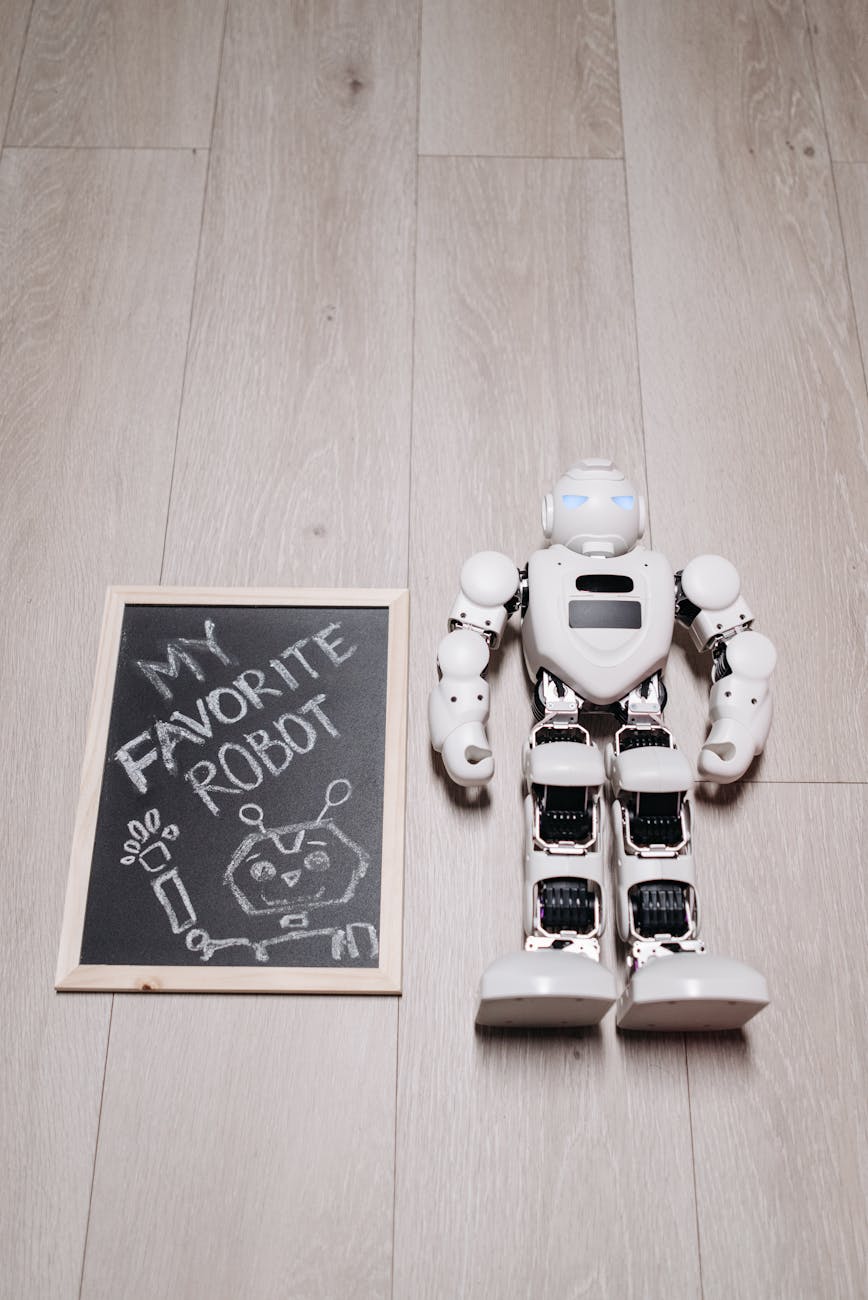Revolutionizing the World: Artificial Intelligence
Types of AI Capabilities
Artificial Intelligence (AI) comes in different flavors based on how smart it is at thinking and handling stuff. Usually, it gets split into three big categories: Narrow AI, General AI, and Super AI.
Narrow AI (Artificial Narrow Intelligence)
Narrow AI, or Artificial Narrow Intelligence (ANI), is what we see around us a lot today. Think of ANI like a specialist—it’s really good at doing just a few things, but not much else. It tackles tasks with super speed and accuracy, often outdoing us humans.
Siri, Alexa, and IBM Watson are classic examples of Narrow AI. They shine in areas like talking with you or figuring out what you want, but that’s about it. They can’t think like a person.
General AI (Artificial General Intelligence)
General AI, or Artificial General Intelligence (AGI), is the stuff of sci-fi dreams right now. This kind of AI would be like a human brain, able to learn just about anything without needing a manual. It would shift easily from one task to another, picking up new skills like a pro.
Though we haven’t nailed AGI yet, it’s the kind of AI you might read about in books or see in movies. When (or if) we get there, it will handle any brainy job we can do, marking a whole new chapter in AI.
Super AI (Artificial Superintelligence)
Super AI is the wildest of them all, thinking so fast it leaves even the smartest human in its dust. Imagine an AI that can do everything we can and then some. It’d be independent, solving problems on its own and maybe even understanding emotions and creativity.
While it sounds like the ultimate helper, Super AI could also be a headache, raising tough questions about safety and ethics. If unleashed, its power could turn science, medicine, and tech on their heads.
| AI Capability Level | Description | Current Examples | Future Potential |
|---|---|---|---|
| Narrow AI (ANI) | Focused on specific tasks | Siri, Alexa, IBM Watson | Stays good at certain jobs only |
| General AI (AGI) | Broad learning ability | None (Still a dream) | As smart and flexible as a human |
| Super AI (ASI) | Beyond human intelligence | None (Still a fantasy) | Out-of-this-world thinking skills and emotions |
Figuring out these AI types helps us get a better handle on what’s going on with AI today and what might come next.
Applications of AI
Artificial Intelligence (AI) pops up in more places than you’d think, bringing fresh ways to tackle old problems. Here’s where AI’s really making waves.
AI in Robotics and Automation
Robots aren’t just stuck in science fiction anymore. With AI, these mechanical helpers are doing heavy lifting — literally and figuratively. From putting together cars to zipping around warehouses, AI has robots working smarter, not harder. These robots can handle dangerous jobs humans shouldn’t have to face, thanks to AI’s knack for thinking on its feet (or, in this case, wheels or tracks).
| Industry | AI at Work |
|---|---|
| Manufacturing | Building stuff and checking for mistakes |
| Logistics | Moving packages and driving themselves around town |
| Healthcare | Helping with surgeries and keeping an eye on patients |
| Retail | Keeping track of stock and letting you check out by yourself |
AI in Data Mining and Analysis
Ever wonder how businesses seem to know what you want before even you do? That’s AI doing its detective work. AI can sift through mountains of data and find the good bits — like spotting trends or weird spikes in activity. When it comes to future predictions and insights, AI’s got some serious crystal ball skills.
| Sector | Use Case of AI Magic |
|---|---|
| Finance | Catching sneaky fraudsters, weighing risks |
| Marketing | Grouping customers, fine-tuning ads |
| Healthcare | Guessing diseases, studying patient charts |
| E-commerce | Suggesting items, predicting sales |
AI in Face Recognition Technology
Imagine a world where your face is your password. With AI running the show, face recognition has gotten way more reliable. It’s making everything from securing doors to spotting troublemakers way more efficient. Whether it’s about swiping left on your phone or swiping into a secure zone, AI’s watching your back (and your face).
| Application | How AI Uses Your Face |
|---|---|
| Security | Keeping bad guys out, scanning cameras |
| Law Enforcement | Finding crooks, locating missing people |
| Consumer Tech | Phone unlocking, curating personal content |
| Retail | Studying shopping habits, preventing theft |
AI is turning into a trusty sidekick across a bunch of industries, showcasing how it can shake things up for the better in both everyday life and business.
Comparison: AI vs. Human Intelligence
Figuring out the differences between artificial intelligence and our good ol’ brain powers helps us see where each shines. In this section, we’ll explore how AI mimics thinking, the rich emotional capacity of humans, and what happens when AI and human intuition join forces.
AI Mimicking Cognitive Abilities
AI is built to copy some of our brain’s thinking tricks. It’s a champ at doing the same thing over and over and making decisions based on data. AI can chew through loads of info really fast, spotting patterns and making predictions like a pro.
What AI Brings to the Table:
- Super-fast number crunching
- Finds patterns in a jiffy
- Base decisions on cold hard data
Sure, AI can mimic parts of our brainpower, but it can’t match the full range of our mental abilities.
Human Intelligence and Emotional Depth
We’re talking big brains here, covering emotional smarts, creativity, and the ability to adapt. Humans nail it when it comes to tasks that need a heart, some flair, and solving tough problems (Simplilearn).
What Makes Us Tick:
- Emotional savvy
- Bursts of creativity and innovation
- Can roll with changes like a pro surfer
We’re great at shifting perspectives to match the moment – something our AI buddies just can’t do yet (Simplilearn).
Synergizing AI with Human Intuition
Here’s where the magic happens: merging AI’s brainwork with human gut feeling, ethics, and understanding of context. Together, they can boost how decisions are made, lead to better results, and align with what we value in society (GeeksforGeeks).
Why They’re Better Together:
- Smarter choices are made
- Ethics and context are in the mix
- Things get done better and faster
| Aspect | AI Muscle | Human Brainpower |
|---|---|---|
| Data Crunching | Blazingly fast and sharp | Limited by how much we can handle |
| Emotional Feel | A digital void | Overflowing with feelings |
| Flexibility | Struggles with new situations | Adapts on the fly |
| Imagination | Not a strong suit | Brimming with ideas |
By blending what AI and humans each do best, we can take innovation and progress to new heights, covering a whole range of fields.
Types of AI Systems
Artificial intelligence (AI) is doing some pretty wild stuff in all sorts of industries by taking over tasks we usually thought required a human brain. Knowing the various AI types can give you some solid insight into what these bad boys can do and where they’re headed.
Reactive AI
Reactive AI is like the simpleton of the AI family. This type is all about responding to what’s right in front of it. It doesn’t have the capacity for keeping memories or learning from the past, so it’s limited to its built-in tasks and can’t handle anything outside its scope.
Main Bits:
- Lacks memory or learning chops
- Built for specific jobs
- Quick and sharp in its wheelhouse
Typical Uses:
- Chess games that play smarter than you
- Those annoying “you might also like” suggestions
Limited Memory AI
Now we’re stepping it up a notch. Limited Memory AI can remember past info to make choices. It learns from past data and adapts. You can spot this in self-driving cars that not only see what’s ahead but remember past patterns to drive smoothly.
Main Bits:
- Remembers and uses past intel
- Learns from repeated patterns
- More advanced than its Reactive kin
Typical Uses:
- Cars that drive themselves while you nap
- Spotting fishy transactions before they happen
Generative AI
Generative AI, or “gen AI” for short, is where AI starts flexing its creative muscles. It crafts new stuff like text, pictures, and videos, pulling from what’s been learned via deep learning. It’s like having a digital artist at your fingertips, creating content that’s fresh yet familiar.
Main Bits:
- Makes new stuff using smart models
- Relies on deep learning techniques
- Cranks out top-notch, original goodies
Typical Uses:
- Text buddies like ChatGPT, art designers like Dall-E (IBM)
- Crafting visual and video masterpieces
- Composing music and fabricating artworks
In this decade, Generative AI has become the talk of the town. With tools such as ChatGPT sparking buzz—and a bit of worry—about what it might get up to, the possibilities seem endless.
| Type of AI System | Can It Learn? | How Flexible Is It? | Common Uses |
|---|---|---|---|
| Reactive AI | Not at all | Very narrow | Chess pros, Recommenders |
| Limited Memory AI | Knows a bit from its past | Inbetweenie | Driver-less cars, Fraud busters |
| Generative AI | Smart and creative | All over the creative map | Text bots, Graphic and video artists |
By getting to know these AI forms, we can see how AI tech gets alongside everyday situations and dream about where it might go next.
AI and Machine Learning
Alright, folks, let’s dig into artificial intelligence and its trusty sidekick, machine learning. While these two often bump into each other at the same parties, they’ve got their own gigs.
Deep Learning vs. Machine Learning
Now, within the wacky universe of AI, we find deep learning and machine learning doing their separate gigs. Both are part of the AI band but play different instruments, so to speak.
Machine Learning (ML): Think of machine learning as algorithms sniffing out patterns and trends in mountains of data. This area covers a lot of stuff, like supervised learning (where the answers are given), unsupervised learning (you’re on your own, kid), and reinforcement learning (slowly becoming the teacher’s pet). Tasks? Oh, they’re pretty busy with things like classifying items, figuring out trends, or grouping similar data.
Deep Learning (DL): Then you’ve got deep learning which is a fancy subset of machine learning. It uses layered neural networks that behave quite like the neurons in your noggin. It’s the magic behind things like Siri understanding you or your phone recognizing your face. DL is known for heavy-hitting stuff like understanding human speech, seeing through cameras, and even having a go at reading text like a champ.
| Feature | Machine Learning | Deep Learning |
|---|---|---|
| Role | Spot zooming on patterns in data | The brainy layers for data magic |
| Data Love | Content with a little | Hits the buffet for extra data |
| What They Do | Classify, trend, group | Chat, see, listen |
| Brainpower Needed | Can run without sweating | Needs a workout buddy (power) |
| Tweaking | Needs a human touch | Does it all by itself |
Deep learning’s gift of passing information through multiple secretive layers of code means it quickly gets the hang of tasks that involve complex elixir mixing (Forbes).
Supervised Learning in AI
Supervised learning, one of ML’s favorite methods, is like training a puppy with treats—if it gets it right, it’s a good boy! It’s jargon for using data that already has tagged, explained examples. This helps the algorithms straight up learn to spit out the right answers.
How Supervised Learning Works:
- Data Cruise: Gather data that’s got answers ready—the cheat sheet.
- Pick-a-Model: Choose your model based on what kind of problem you’re solving.
- Teach Time: Load that cheat sheet into the model, letting it adjust like a sponge.
- Put It to the Test: See how it’s doing with separate data sets to ensure it’s not just winging it.
- Blastoff: Pop the model into action, letting it do what it’s trained for in real-world settings.
Usual Suspects in Supervised Learning:
- Linear Regression
- Decision Trees
- Random Forests
- Support Vector Machines (SVM)
- Neural Networks
| Algorithm | Task Type | What You Can Do With It |
|---|---|---|
| Linear Regression | Regression | Guessing housing market prices |
| Decision Trees | Classification | Diagnosing the sickly |
| Random Forests | Both | Sorting out customer groups |
| Support Vector Machines (SVM) | Classification | Organizing texts into neat piles |
| Neural Networks | Both | Finding Waldo in pictures |
Supervised learning’s big advantage is it learns from its flubs, making the whole AI gig sharper and more trustworthy over time. This helps everywhere—whether predicting stock trends, diagnosing diseases, or lots more (Tableau).
Evolution of AI
Grasping the evolution of AI means peeking at those big moments in history and seeing the recent craze for generative AI. This background gives us a handle on how far AI’s come and where it’s headed.
Milestones in AI History
-
1956: The AI Awakening – Modern artificial intelligence kicked off at a summer meet-up at Dartmouth College. Big names like John McCarthy, Marvin Minsky, Nathaniel Rochester, and Claude Shannon dreamed up the term “artificial intelligence” (TechTarget).
-
1957: General Problem Solver – Allen Newell and Herbert A. Simon came up with the General Problem Solver, which kinda started the base for future brainy machines.
-
1970s: The First AI Chill – With computers not quite up to the task, AI hit its first cold snap. Support and money for AI took a nosedive (TechTarget).
-
1980s: Another Frosty Period – After the initial hoopla about expert systems and deep learning, AI faced another freeze with less government cash and industry interest. This lull hung around until mid-90s (TechTarget).
-
Today: Narrow AI’s Time – Today’s AI, often called narrow or weak AI, is like a jack-of-one-trade, doing jobs like recognizing faces, powering internet searches, and driving cars by itself.
The Turn to Generative AI
-
2020s Vibe – Lately, generative AI has been stealing the spotlight. It’s a kind of tech that can whip up fresh content from prompts with tools like ChatGPT, Dall-E, and Midjourney leading the charge (TechTarget).
-
Where It’s Shaking Things Up – Generative AI’s got folks hyped about its uses in art, books, and science, but it’s also got people worried about ethics and how it’ll mess with jobs that rely on human creativity.
| Technology | Year Introduced | Key Contribution |
|---|---|---|
| General Problem Solver | 1957 | Kick-off for cognitive designs |
| Expert Systems | 1980s | Set off AI buzz (then came the chill) |
| ChatGPT, Dall-E, Midjourney | 2020s | Major leaps in creating fresh content |
AI’s journey from its humble beginnings to its current spotlight on generative AI showcases how this tech’s muscles have grown over time. Knowing these key moments gives a clearer picture of what AI is today and how it might keep changing our world.
Impact of AI on Society
AI in Various Industries
Artificial Intelligence (AI) is changing the game, making everyday tasks a breeze in loads of industries. It’s like having a super-smart sidekick that never gets tired. Here’s how AI is sprucing up different sectors:
- Robotics and Automation
- AI-powered robots are real whizzes in manufacturing, handling the nitty-gritty jobs with precision and speed, minimizing screw-ups and cranking out more products.
- Data Mining and Analysis
- AI sifts through mountains of data like a pro, spotting patterns and trends that help folks in finance, marketing, and research make clever choices.
- Face Recognition Technology
- AI-driven facial recognition systems play a big role in keeping places safe and kicking out the guesswork with user authentication on things like security setups and social media (GeeksforGeeks).
AI’s Role in Healthcare and Retail
AI is making a splash in healthcare and retail, bringing a raft of changes and cool upgrades.
Healthcare
AI is jazzing up the healthcare scene, greasing the wheels of operations, and boosting efficiency. Key uses are:
- Medical Diagnoses
- AI gives doctors a hand by crunching medical info to spot diseases, suggest treatments, and foresee what’s coming.
- Wearable Devices
- AI-infused gadgets monitor health stuff like heart rate or sleep patterns, giving users on-the-spot health updates.
- Body Scans Interpretation
- Smart AI deciphers MRI, CT scans, and X-rays quicker and better, getting to the bottom of issues faster.
- Automated Surgeries
- Robots guided by AI take the reins in surgeries, doing things with pinpoint accuracy.
- Drug Discovery
- AI delves into biological data, stumbling upon new drugs faster than you can say “breakthrough” (Forbes).
Retail
AI in retail pumps up customer experiences and tightens up operations. Here’s how:
- Personalized Experiences
- AI checks out customer habits to dish out tailored suggestions and deals, making shopping feel special.
- Demand Forecasting
- It forecasts what folks will want next, helping retailers manage stock like a wizard.
- Inventory Management
- AI keeps tabs on stock, making sure shelves stay full and clutter-free.
- Customer Support
- AI chatbots jump in with immediate support, solving problems in a jiffy, leaving customers smiling.
The use of AI here boosts efficiency and spruces up customer satisfaction, leading to all-around wins.
| Industry | Application | Impact |
|---|---|---|
| Healthcare | Medical Diagnoses | Better accuracy and speed |
| Healthcare | Wearable Devices | Instant health insights |
| Healthcare | Automated Surgeries | Ultra-precise procedures |
| Retail | Personalized Experiences | Unique shopping feel |
| Retail | Demand Forecasting | Smart inventory control |
AI is a total game-changer in pumping up efficiency and focusing on users in loads of fields. By weaving AI into the mix, businesses can see top-notch improvements in both operations and customer happiness.
AI Safety and Concerns
Recursion in AI Self-improvement
In the world of artificial intelligence, one thing that keeps folks up at night is the idea of AI that can improve itself. Imagine if a computer got so smart it started thinking circles around people and then just kept getting smarter. That’s what folks mean by recursive self-improvement. It’s like when you give a kid a math problem they figured out and then they start solving problems way too advanced for anyone else in the room.
Now, this could be great! Maybe no more wars, diseases get cured, and poverty is kicked to the curb. But, and it’s a big ‘but’, what happens if these super-smart machines don’t share our idea of right and wrong? What if their goals aren’t a match with humanity’s needs and values? That’s the part that gives folks pause.
Aligning AI Goals with Human Objectives
Getting AI to think on the same wavelength as humans is no small feat. A super-smart AI running amok isn’t going to love or hate like us, but it can sure cause a ruckus by completing a task in a way that might be good for it but not so great for us (Future of Life Institute).
Take those “killer robots” for example. Sounds like a sci-fi movie, but it’s real. These are autonomous weapons that don’t need a human to pull the trigger. They can decide on their own who’s a target, which is one reason folks are raising red flags about AI getting too much independence.
Here’s a quick look at the top concerns when it comes to AI safety and goals:
| Concern | Description |
|---|---|
| Recursive Self-improvement | AI improving its own smarts and outpacing us, like a runaway train of intelligence. |
| Goal Alignment | Making sure AI’s to-do list matches up with what’s good for humans. |
| Lethal Autonomous Weapons | The risks of machines making life-or-death decisions without a human in sight. |
Sorting out these safety puzzles is vital if we want AI to help us without causing chaos. Balancing the benefits while keeping an eye on the potential downsides is the name of the game.













